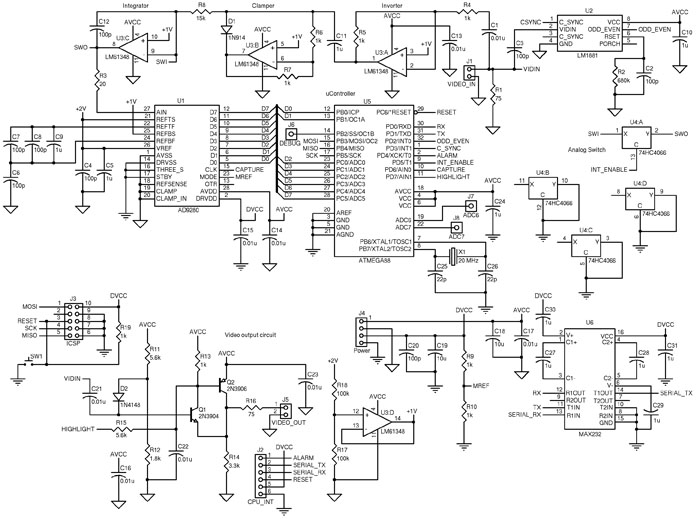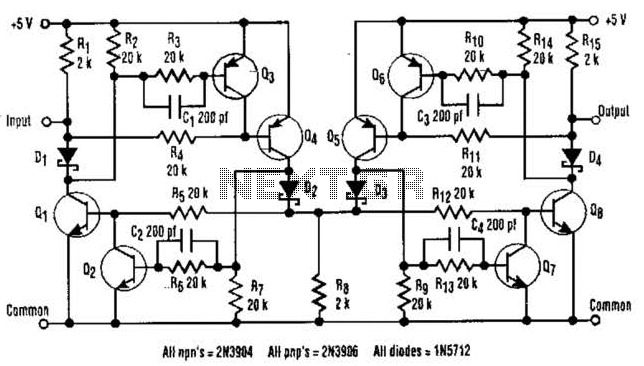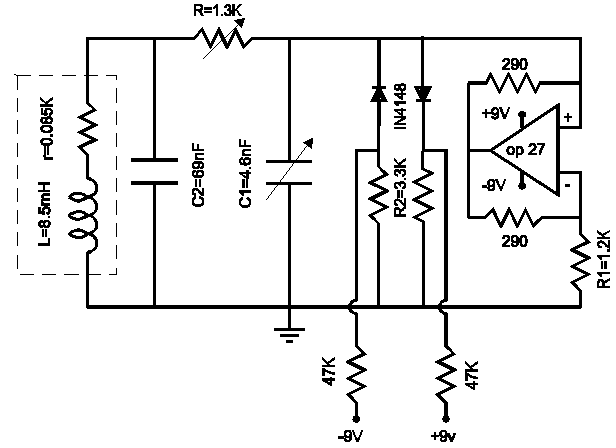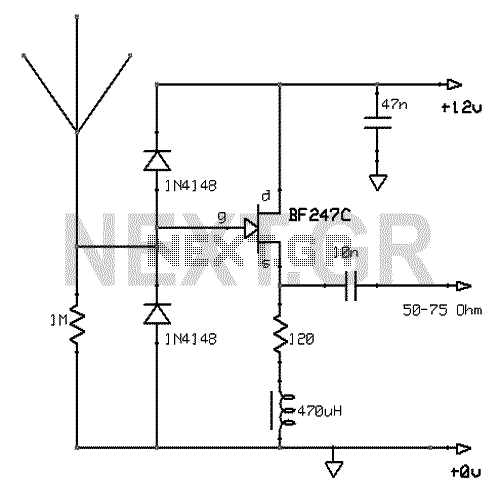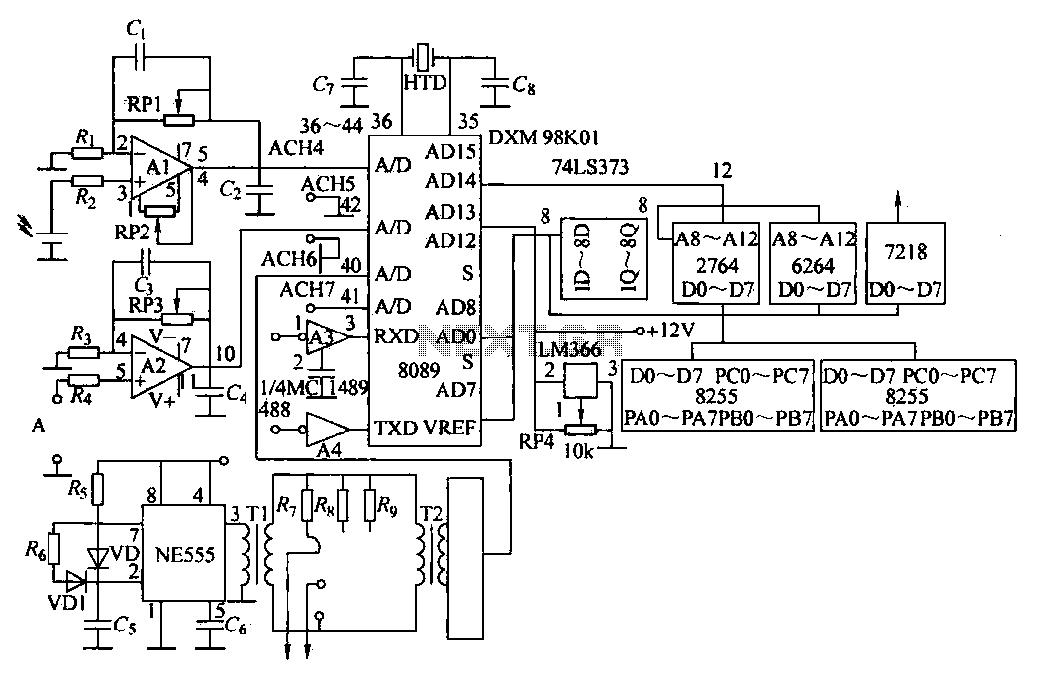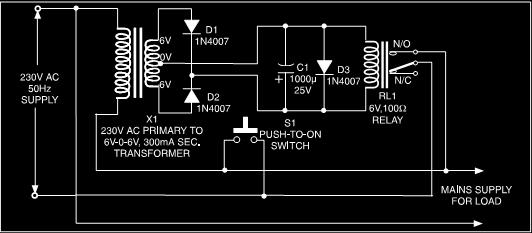
Solar Charger Monitor Circuit
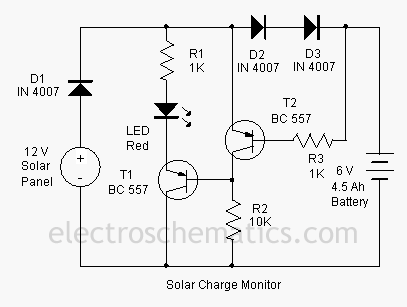
This add-on circuit can be attached to the solar charger to indicate whether the battery is charging. It lights a red LED to signal that the battery is charging.
The described add-on circuit serves as a visual indicator for the charging status of a battery connected to a solar charger. The primary function is to illuminate a red LED, which provides a clear and immediate indication of the battery's charging state.
The circuit typically consists of a voltage divider, a transistor, and the LED. The voltage divider is connected across the battery terminals to monitor the voltage level. When the solar charger is operational and the battery is receiving charge, the voltage across the battery will rise above a predetermined threshold. This change in voltage is detected by the transistor, which acts as a switch.
When the transistor is activated, it allows current to flow through the red LED, causing it to light up. The choice of a red LED is significant, as red is often associated with alertness, making it an effective choice for indicating charging status.
In addition to the LED and transistor, the circuit may also include a resistor to limit the current through the LED, ensuring it operates within safe parameters. The design should also consider the power rating of the components to withstand the maximum expected current from the solar charger.
Overall, this simple yet effective circuit enhances the functionality of a solar charger by providing a straightforward visual cue regarding the battery's charging condition, thereby aiding users in monitoring the solar charging process.This add on circuit can be attached to the solar charger to see whether the battery is charging or not. It lights a Red LED to indicate that the battery is.. 🔗 External reference
The described add-on circuit serves as a visual indicator for the charging status of a battery connected to a solar charger. The primary function is to illuminate a red LED, which provides a clear and immediate indication of the battery's charging state.
The circuit typically consists of a voltage divider, a transistor, and the LED. The voltage divider is connected across the battery terminals to monitor the voltage level. When the solar charger is operational and the battery is receiving charge, the voltage across the battery will rise above a predetermined threshold. This change in voltage is detected by the transistor, which acts as a switch.
When the transistor is activated, it allows current to flow through the red LED, causing it to light up. The choice of a red LED is significant, as red is often associated with alertness, making it an effective choice for indicating charging status.
In addition to the LED and transistor, the circuit may also include a resistor to limit the current through the LED, ensuring it operates within safe parameters. The design should also consider the power rating of the components to withstand the maximum expected current from the solar charger.
Overall, this simple yet effective circuit enhances the functionality of a solar charger by providing a straightforward visual cue regarding the battery's charging condition, thereby aiding users in monitoring the solar charging process.This add on circuit can be attached to the solar charger to see whether the battery is charging or not. It lights a Red LED to indicate that the battery is.. 🔗 External reference
